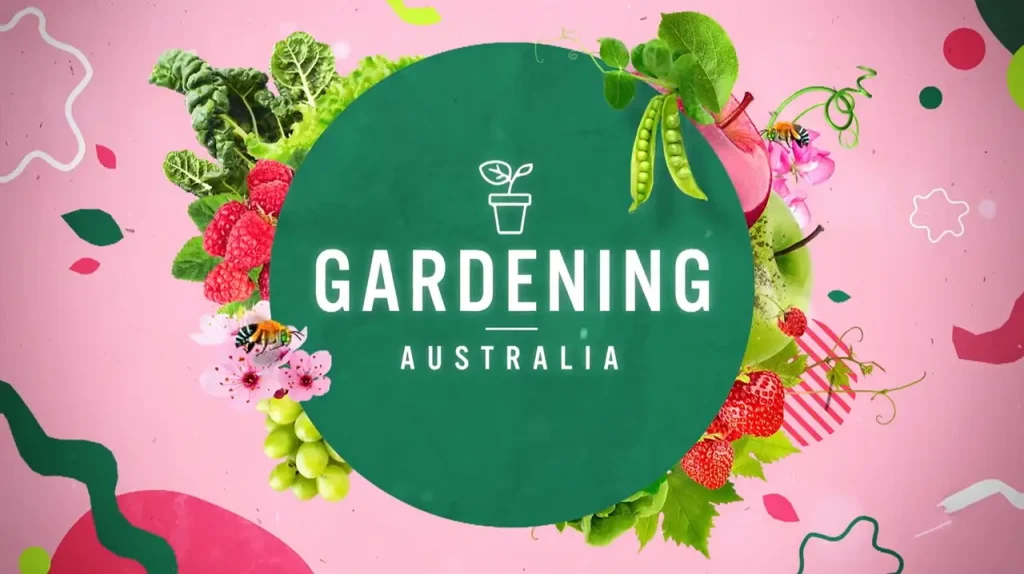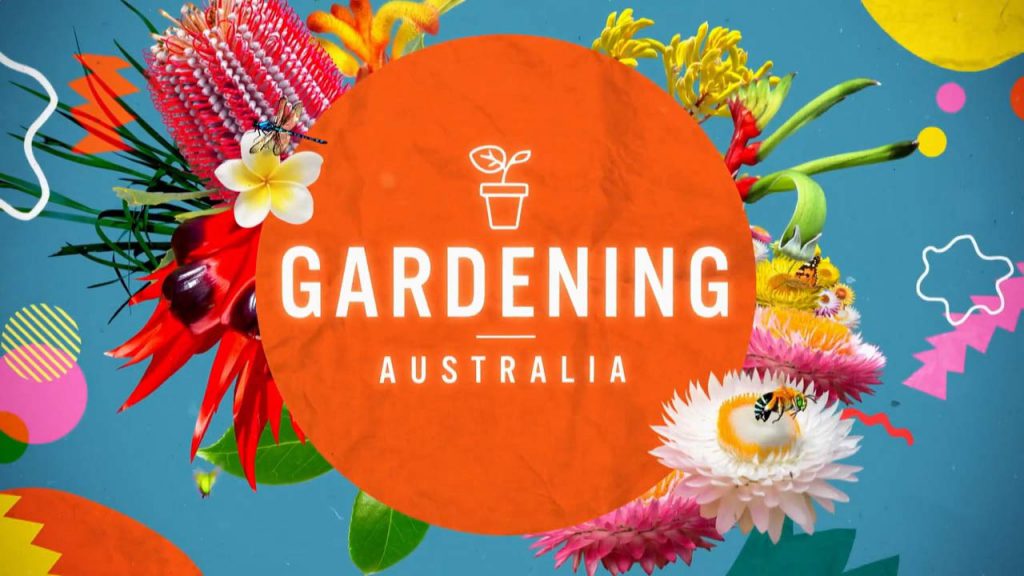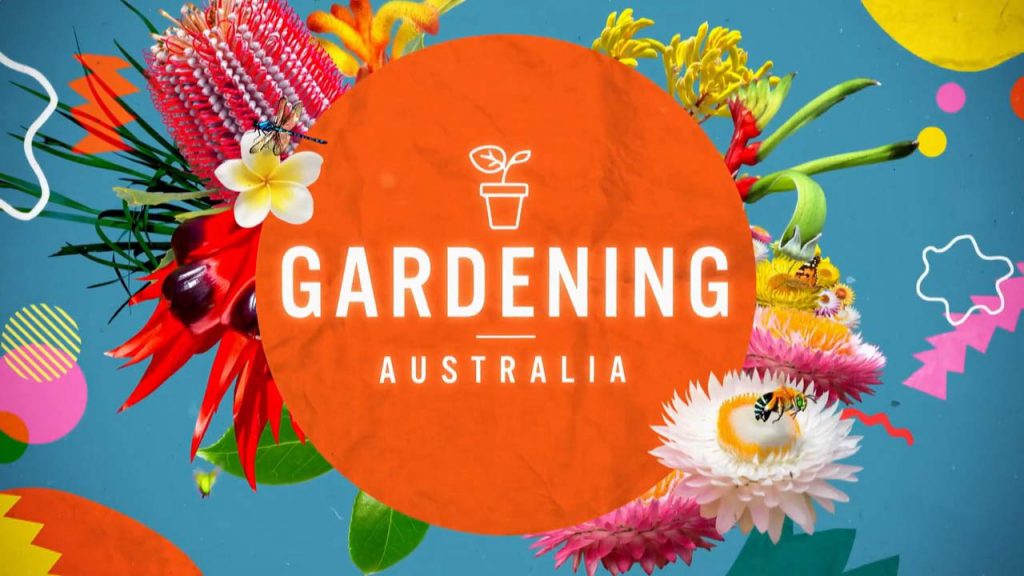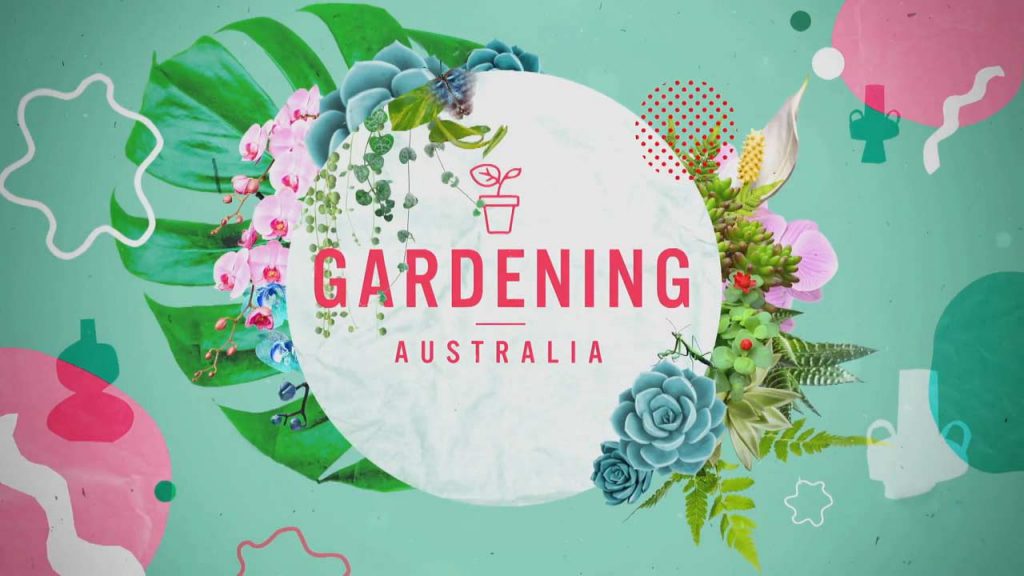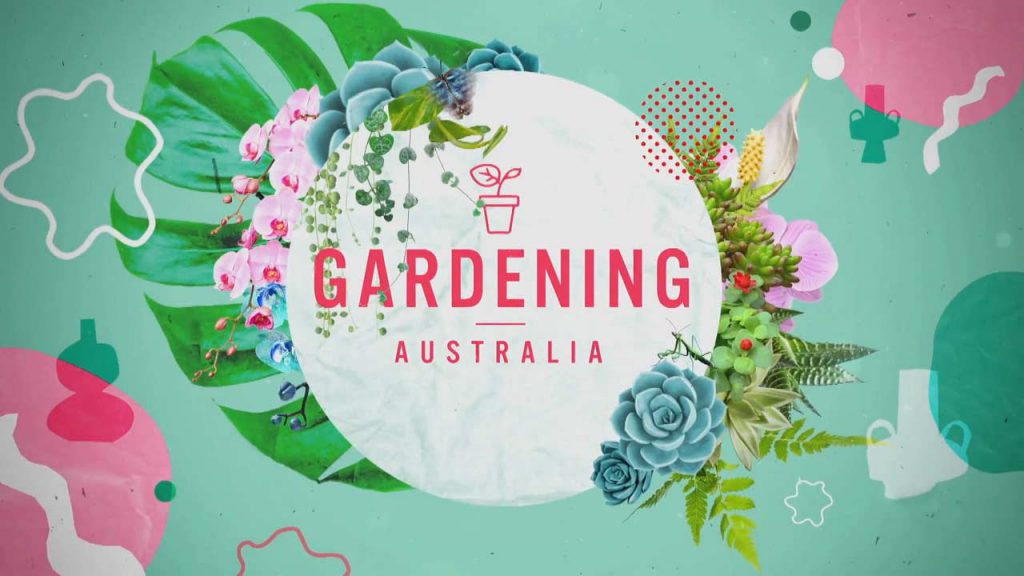Gardening Australia episode 31 2023 – In an inspiring episode, Costa embarks on a journey to meet with dedicated farmers who are at the forefront of combating food waste. Their passion and innovative methods reveal a brighter, more sustainable future for our planet. Meanwhile, Josh takes us on a delightful tour of a unique garden, ingeniously built atop a natural spring. The gushing waters and the landscape’s vitality is a sight to behold, reminding us of nature’s resilience and beauty.
Tammy then turns the spotlight to the fascinating world of Gesneriad plants. These intriguing species, often overlooked, come alive as she delves into their peculiarities and significance in the world of horticulture. On a different note, Hannah introduces us to the intriguing haskap berry farm, where the vibrant berries not only tantalize our taste buds but also tell a story of cultivation and care.
And for those seeking budget-friendly gardening insights, Jerry steps in with his treasure trove of frugal garden tips. His wisdom teaches us that a lush, thriving garden doesn’t always require a hefty budget; sometimes, all it takes is creativity and knowledge.
Last but not least, prepare to be amazed as we get a glimpse into the life of a young student whose love for plants goes beyond the usual. This botanical enthusiast has transformed an ordinary bedroom into a verdant oasis, demonstrating that the passion for nature can find its expression in the most unexpected places. Join us as we explore these captivating stories and more, celebrating the wonders of the natural world around us.
Gardening Australia episode 31 2023
Costa’s Farm Visit
In the heart of the countryside, where the air is fresh and the land is fertile, lies a farm that is redefining the way we think about waste. This isn’t just any farm; it’s a testament to the vision and perseverance of Alice and her father. Initially, the duo embarked on a humble endeavor, capitalizing on the surplus garlic from their hobby crop. However, what started as a simple exercise in sustainable thinking quickly blossomed into a large-scale composting operation.
Today, this commendable initiative partners with 16 commercial kitchens, collecting a staggering 2-3 tonnes of food waste per week. What makes this effort genuinely remarkable is the intricate separation process it employs. Each participating venue is equipped with color-coded bins, each designated for a specific type of waste. This meticulous sorting ensures that every scrap of waste is appropriately processed and utilized.
Nestled on a scenic 40-acre property that has been in Alice’s family for generations, the farm is a verdant expanse dotted with 86 long planting beds. The underlying philosophy here is simple yet profound: “close the loop.” By leveraging waste to nourish the soil, the farm produces fresh, organic produce, which is then sold back to the very chefs who contributed the waste. This circular approach to farming not only minimizes waste but also fosters a symbiotic relationship between the farm and its partners.
However, the journey hasn’t been without its challenges. The farm faced significant setbacks when recent floods ravaged the land, threatening its very existence. But with the indomitable spirit that characterizes this venture, Alice and her team persevered, showcasing the resilience that is often at the heart of sustainable initiatives.
In essence, Costa’s Farm Visit offers a glimpse into the future of farming—a future where waste is not just discarded but is seen as a valuable resource, a future where sustainability is not just a buzzword but a way of life.
- Gardeners’ World 2023/24 Winter Specials episode 4Frances Tophill, alongside her enthusiastic team, passionately celebrates the diverse and vibrant joys that each season brings to the world of gardening.
- Gardeners’ World 2023/24 Winter Specials episode 3Monty Don and his expert team not only celebrate the vibrant and delightful aspects of the gardening year, but they also joyfully embrace the festive season of Christmas!
- Gardening Australia episode 38 2023Costa finds joy in carefully selecting and presenting exquisite garden bed gifts, each thoughtfully designed to bring a slice of nature’s serenity into various living spaces.
- Gardeners’ World 2023/24 Winter Specials episodeIn an engaging episode, Adam Frost pays a visit to the delightful Mary Berry at her residence to delve into another of her fervent interests beyond the culinary world: the art of gardening.
- Gardening Australia episode 37 2023Costa enthusiastically guides us through the eco-friendly process of using a spinning compost bin, explaining how it efficiently transforms kitchen scraps and garden waste into nutrient-rich compost.
- Gardeners’ World 2023/24 Winter Specials episode 1Monty Don offers his expert guidance on the best methods to pot up amaryllis, a true star of the festive season, providing detailed steps to ensure their thriving growth.
Josh’s Garden Tour
Stepping into Andrew and Erica’s garden feels like entering a verdant sanctuary, a testament to the delicate balance between human intervention and nature’s raw beauty. Nestled on a challenging 665 sqm battleaxe lot, this garden showcases the transformative power of innovative design. The 8m front to back fall of the property could have been seen as a limitation. Instead, it became a canvas upon which a masterpiece was painted.
The garden’s terraces are a marvel of layered design, each brimming with a diverse array of native plants from various WA bio-regions. These terraces, sculpted with precision and care, serve as natural steps that guide visitors through the garden’s multifaceted spaces. But what truly sets this garden apart is its commitment to sustainability. A specially designed irrigation system harnesses the power of natural springs, ensuring the garden remains lush and vibrant throughout the year without relying on external water sources.
Beyond its aesthetic appeal, the garden plays a crucial role in stormwater management. Ingenious systems, such as soak wells and runoff redirection to a central creek, ensure that water is utilized efficiently, minimizing waste and preventing potential flooding.
Yet, at its core, this garden is more than just a blend of plants and innovative systems. It’s a living, breathing habitat. The melodious chirping of birds, the gentle croak of frogs, and the subtle rustle of other wildlife are a testament to the garden’s role as a sanctuary for local fauna.
Josh’s tour of this garden is more than just a walk through a beautifully landscaped space. It’s a journey that underscores the symbiotic relationship between humans and nature, reminding us of the profound impact thoughtful design can have on the environment.
Tammy’s Plant Profile
The world of plants is vast, varied, and full of wonders waiting to be discovered. Among these botanical treasures is a group known as Gesneriads, a family that captures the imagination with its diversity and charm. Originating from the humid niches of tropical forests, these evergreen perennials have carved a special place in the hearts of plant enthusiasts like Tammy.
Gesneriads are characterized by their soft, fuzzy leaves, a natural adaptation to retain moisture in their native habitats. While many thrive in the warm embrace of tropical climes, some varieties exhibit remarkable resilience, braving colder temperatures with ease. This adaptability makes them a favorite among gardeners and indoor plant aficionados alike.
One of the standout features of Gesneriads is their versatility. Spreading varieties like Streptocarpus, with their cascading growth patterns, are ideal candidates for indoor hanging displays. On the other hand, the Columnea species, with its striking bright red flowers, adds a splash of color and intrigue to any setting.
For those keen on expanding their plant collection, Gesneriads offer a simple and efficient propagation method. By taking cuttings from stem tips, one can quickly cultivate new plants, adding to the lushness of their green spaces. However, as with all plants, they demand specific care. A well-draining soil is paramount, ensuring that the roots remain healthy. Consistent moisture levels are preferred, but one must be vigilant against potential threats like mealybugs and molds.
In her exploration of Gesneriads, Tammy shines a light on the wonders of the botanical world. These plants, with their unique characteristics and beauty, serve as a reminder of the endless possibilities that nature offers. They beckon us to delve deeper, to explore, and to marvel at the intricate tapestry of life that plants weave around us.
Hannah’s Berry Farm Visit
Nestled in the cool embrace of Tasmania lies a farm that is a testament to innovation, passion, and the indomitable spirit of its owners, Denise and Howard. As they approached their golden years, instead of settling into a routine retirement, the couple embarked on a unique agricultural adventure. Their quest: to discover unusual cold-climate crops that could thrive in Tasmania’s distinct climate.
Their research led them to the haskap berry, a fruit related to the blueberry but distinguished by its elongated shape. But rather than simply reading about it, Denise and Howard traveled all the way to Canada. They wanted to experience the flavor of the haskap firsthand, to know if it was worth the effort. And it was. The tantalizing taste of the berry convinced them to take the plunge.
What followed was a journey riddled with challenges and rewards. Importing seeds and plants, setting up the orchard, and navigating the intricacies of agricultural regulations took time and perseverance. But their dedication bore fruit, quite literally. Today, the farm boasts 80 original plants, each capable of yielding up to 4kg of succulent berries when mature.
But Denise and Howard’s vision extends beyond just cultivating these berries. They are on a mission to introduce the Australian palate to the delightful flavor and nutritional benefits of haskap berries. By selling plants across the nation, they aim to spread the joy of this superfood, ensuring that more people can savor its unique taste.
Hannah’s visit to this berry farm is more than just a tour; it’s a narrative of determination, innovation, and a love for the land. It showcases the power of a dream and the lengths to which individuals will go to realize it. In the verdant fields of Tasmania, amidst rows of haskap berries, lies a story of two people, their berries, and their boundless passion.
Jerry’s Gardening Tips
Gardening is not just about cultivating plants; it’s a journey of discovery, creativity, and resourcefulness. Jerry, a seasoned gardener, shares his wisdom, providing invaluable tips that make gardening an accessible and sustainable hobby for everyone.
One of Jerry’s cardinal principles is saving seeds. This practice, often overlooked, is a gateway to sustainability. By harvesting seeds from your plants, you create an endless cycle of growth. It’s a method that’s both economical and rewarding, allowing you to generate hundreds of new plants at virtually no cost.
But Jerry’s ingenuity doesn’t stop there. He encourages gardeners to take cuttings from existing plants, a simple yet effective way to propagate more specimens. This approach not only saves money but also helps in preserving and sharing plant varieties.
In the realm of fertilization, Jerry steers away from conventional options. He explores natural alternatives, advocating for the use of diverse manures – from buffalo to camel, and even cane toad remains. These unique choices not only enrich the soil but also contribute to a circular economy, making use of materials that would otherwise be discarded.
Furthermore, Jerry emphasizes the importance of creating your own potting mix. By combining sand, soil, and old mix, you can create a cost-effective blend that’s perfectly suited to your plants’ needs. This method is not only cheaper than buying pre-made mixes but also allows for customization to match specific plant requirements.
Upcycling is another key theme in Jerry’s gardening philosophy. He encourages the use of everyday items like foam boxes, net curtains, and plastic pots as gardening tools and containers. This practice not only saves money but also reduces waste, aligning with the principles of sustainability.
Finally, Jerry advocates for the exchange of excess produce. This community-oriented approach not only diversifies your garden but also fosters connections with fellow gardeners.
In essence, Jerry’s gardening tips are a blend of practical wisdom and sustainable practices. They remind us that gardening is not just about growing plants; it’s about growing a community, nurturing the environment, and cultivating a sustainable future.
Student’s Indoor Garden
In a cozy corner of a student’s room, there lies a botanical wonderland. It all began with a simple gift – a Monstera plant, known for its striking leaves and easy-going nature. This single plant sparked a fascination that transformed an ordinary room into a thriving indoor jungle, boasting over 150 diverse plant species.
Among this verdant collection, rare Anthuriums stand out, their vibrant blooms adding a splash of color to the leafy green expanse. The student has meticulously optimized the environment for these indoor treasures, employing grow lights that mimic the natural spectrum of sunlight. This careful attention to light ensures that each plant receives the nourishment it needs to flourish.
The heart of this indoor garden is its propagation station. Here, stem cuttings are nurtured into new plants, a process that not only expands the collection but also deepens the student’s understanding of plant growth and care. The garden is meticulously cataloged in a spreadsheet, a testament to the student’s dedication and organizational skills.
One of the stars of the collection is a hybrid philodendron, notable for its symbiotic relationship with ants. This plant produces extra floral nectar, attracting ants that, in turn, provide benefits to the plant, illustrating the fascinating complexities of nature.
The student’s passion for plants began at a young age and has only grown stronger over time. The garden has spilled over from the bedroom to the kitchen and beyond, each space adorned with leafy companions. This indoor oasis is more than just a collection of plants; it’s a source of joy, a haven of tranquility, and a constant reminder of the beauty and resilience of nature.
For the student, this garden is a personal retreat, a space where the air is fresh with oxygen and the ambiance is calming. It represents a connection to the natural world, a bond that is all the more precious in the midst of a busy academic life. This indoor jungle is not just a showcase of botanical diversity; it’s a symbol of the student’s love for plants and the peace they bring into her life.
Conclusion
The transformative power of nature is evident in every corner of our world, from sprawling farms that turn waste into nourishment to innovative gardens that defy architectural challenges. These stories, as showcased in the segments, highlight the resilience, creativity, and dedication of individuals who are redefining the boundaries of sustainable living and gardening. Whether it’s the ambitious endeavor of Denise and Howard in introducing a new superfood berry to Australia or the student’s personal sanctuary filled with over 150 plant species, there’s an underlying theme: a deep-rooted love for nature and a commitment to sustainable practices.
These tales of passion and perseverance also underscore the importance of community and collaboration. Jerry’s advocacy for exchanging excess produce, Costa’s farm selling produce back to the chefs, or the student’s propagation station all emphasize the interconnectedness of our actions and their ripple effects in the community. It’s a reminder that in our pursuit of sustainable living, fostering relationships and sharing knowledge are just as crucial as the plants we grow or the innovations we introduce.
As we reflect on these narratives, there’s a valuable lesson to be gleaned. Each story, in its essence, serves as a testament to the boundless possibilities that await when we harmoniously blend human ingenuity with nature’s bounty. Whether we’re seasoned gardeners, sustainability enthusiasts, or simply individuals curious about the world around us, there’s inspiration to be found, urging us to play our part in crafting a greener, more sustainable future.
FAQ Section:
What started Alice’s larger composting operation at the farm?
Alice initially helped her dad sell excess garlic from his hobby crop, which led to the idea of a larger composting operation that now partners with 16 commercial kitchens.
How does Andrew and Erica’s garden manage stormwater?
The garden employs soak wells and directs runoff to a central creek for efficient stormwater management.
What unique feature does the hybrid philodendron in the student’s indoor garden have?
The hybrid philodendron has a unique symbiotic relationship with ants due to its production of extra floral nectar.
Where did Denise and Howard first taste the haskap berry?
Denise and Howard traveled to Canada to experience the flavor of the haskap berry before deciding to cultivate it in Tasmania.
What are Jerry’s suggestions for upcycling in gardening?
Jerry recommends upcycling items like foam boxes, net curtains, and plastic pots for gardening purposes, emphasizing the importance of sustainability and cost-saving.
